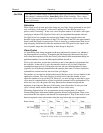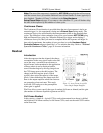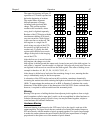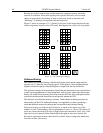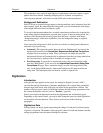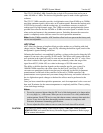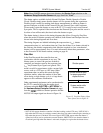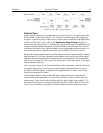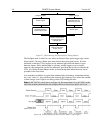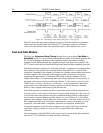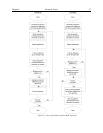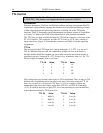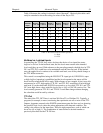
Chapter 6 Advanced Topics 53
Figure 16. Free Run Timing Diagram
External Sync
In this mode all exposures are synchronized to an external source via signal input to the
Ext Sync BNC on the back of the ST-133. To ensure synchronization, the trigger edge
(negative- or positive-going) of the Ext Sync signal must be identified in the application
software (in WinView, this is done on the Experiment Setup|Timing tab page). As
shown in the flowchart, Figure 17, External Sync mode can be used in combination with
Normal or PreOpen Shutter operation. In Normal Shutter mode, the controller waits for
an External Sync pulse, then opens the shutter for the programmed exposure period. As
soon as the exposure is complete, the shutter closes and the CCD array is read out.
Because the external shutter requires a finite amount of time to open completely (shutter
open time may be 5-28 msec depending on the shutter), the External Sync pulse trigger
edge provided by the experiment should precede the actual signal by at least that much
time. If not, the shutter will not be open for the duration of the entire signal, or the signal
may be missed completely.
Also, since the amount of time from initialization of the experiment to the first External
Sync pulse trigger edge is not fixed, an accurate background subtraction may not be
possible for the first readout. In multiple-shot experiments this is easily overcome by
simply discarding the first frame.
In the PreOpen Shutter mode, on the other hand, shutter operation is only partially
synchronized to the experiment. As soon as the controller is ready to collect data, the
shutter opens. Upon arrival of the first External Sync pulse trigger edge at the ST-133,
the shutter remains open for the specified exposure period, closes, and the CCD is read
out. As soon as readout is complete, the shutter reopens and waits for the next frame.



